By Heidi Ware Carlisle, IBO Education and Outreach Director
Perhaps our most exciting (and nerve wracking!) sighting at the Diane Moore Nature Center happened this fall when we discovered a late season Monarch caterpillar. Our team of interns documented a record number of monarch caterpillars in our habitat restoration plots this summer (twelve total!) but we hadn’t seen a caterpillar in weeks. We figured the season had come to a close. But then, visitors to our banding station found a large 5th instar caterpillar on September 24th.
The caterpillar was feeding on milkweed plants in our “monarch meadow” where students and community members have planted hundreds of milkweed plants and wildflowers. Based on its size and life stage, we knew it would have to pupate soon.
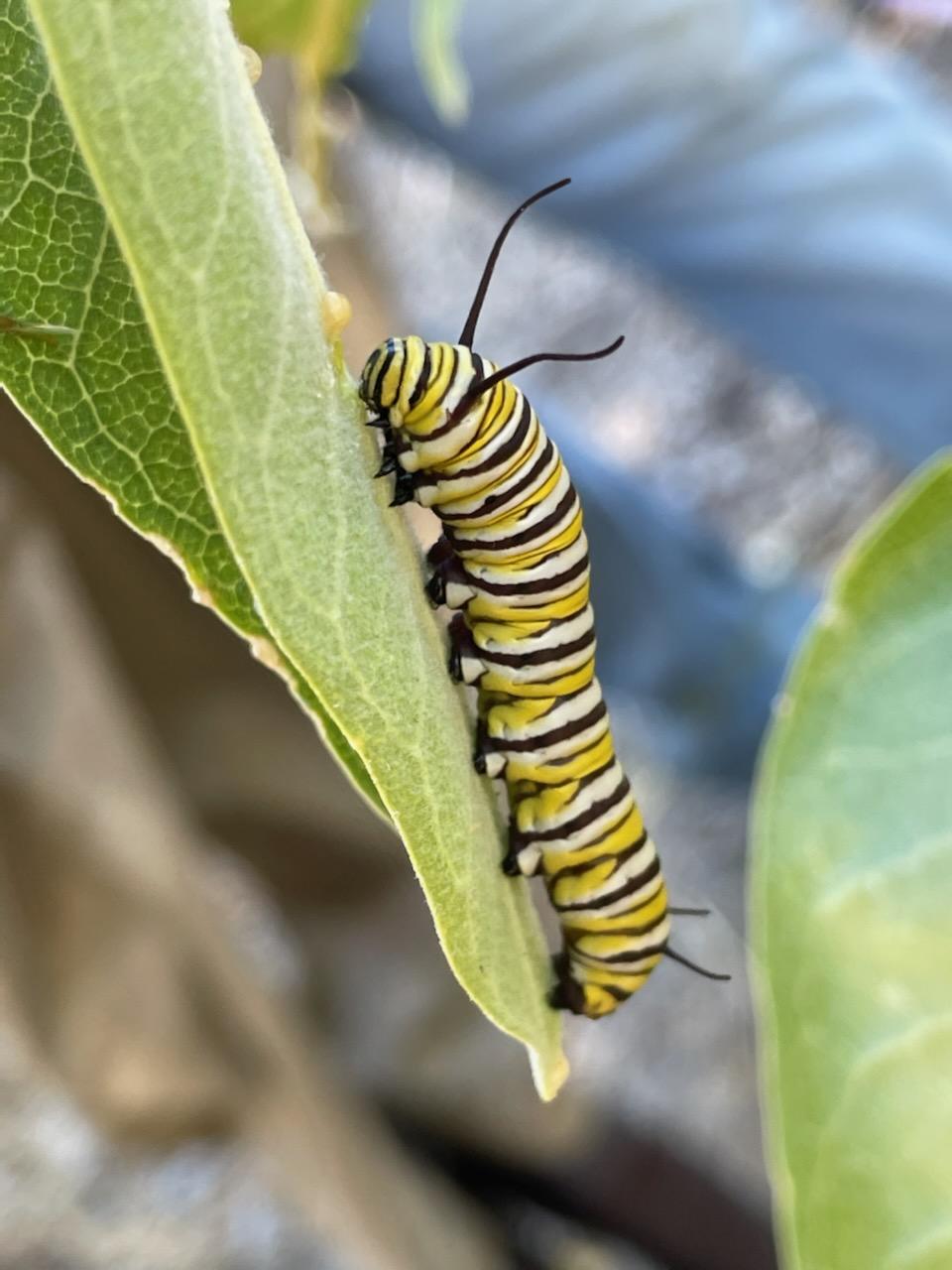
Our work study intern, Aaron Connolly, followed up on the caterpillar a few days later and was amazed by what he discovered…
… it had formed its chrysalis right on the milkweed plant where it had been feeding!
This was an amazing find since many monarchs crawl off their milkweed host to pupate on other shrubs or twigs nearby. We’ve never found a chrysalis at our site before, and this beautiful pupa was a “lifer” for most of our team!
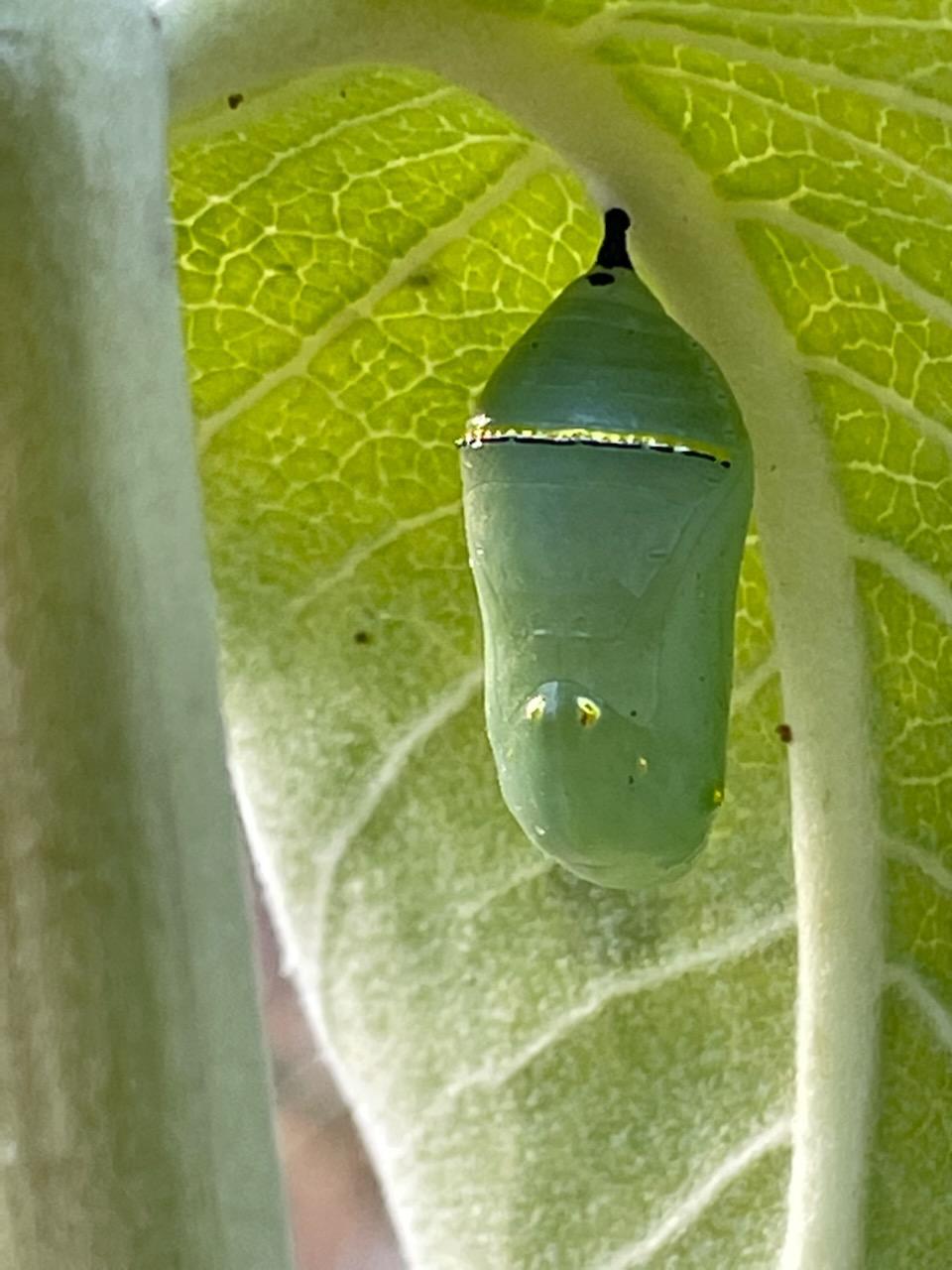
We excitedly watched the chrysalis, checking it each day and bringing groups of students to see the beautiful gold shimmers that decorated the outside. Looking online, we found that most monarchs emerge after 10 to 14 days…but these dates were based on chrysalises formed during the hot days of summer.
As we passed day 15, 16, 17, we started wondering… was the chrysalis dead? Would it ever emerge?
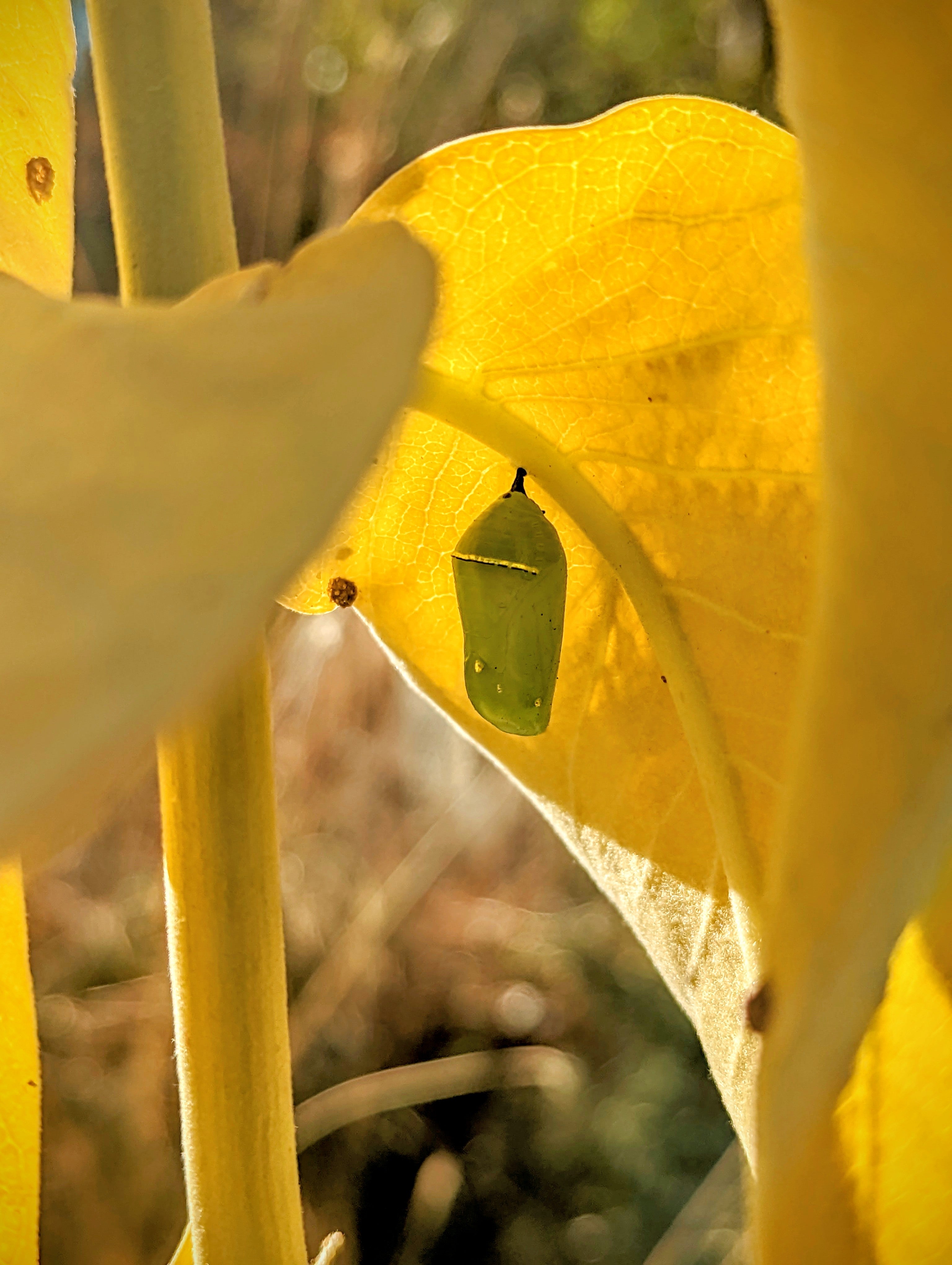
The cool October nights continued to get cooler, and the milkweed plant changed from lush green, to withering yellow, and eventually to a crispy and precariously flimsy thin brown stalk. Each day we checked and watched the plant blowing in the wind, the chrysalis hanging by a thread, we lost more and more hope. We felt like anxious parents waiting on the arrival of a new baby.
Only worse, because each day we left our “baby” hanging on a flimsy leaf, where any person or animal could trample it at any moment!!
But then, on day 19, we spotted a change….the once green chrysalis had darkened a bit! We could make out a curved outline that we imagined might be the folded wings of the developing butterfly. Hope sprang anew!
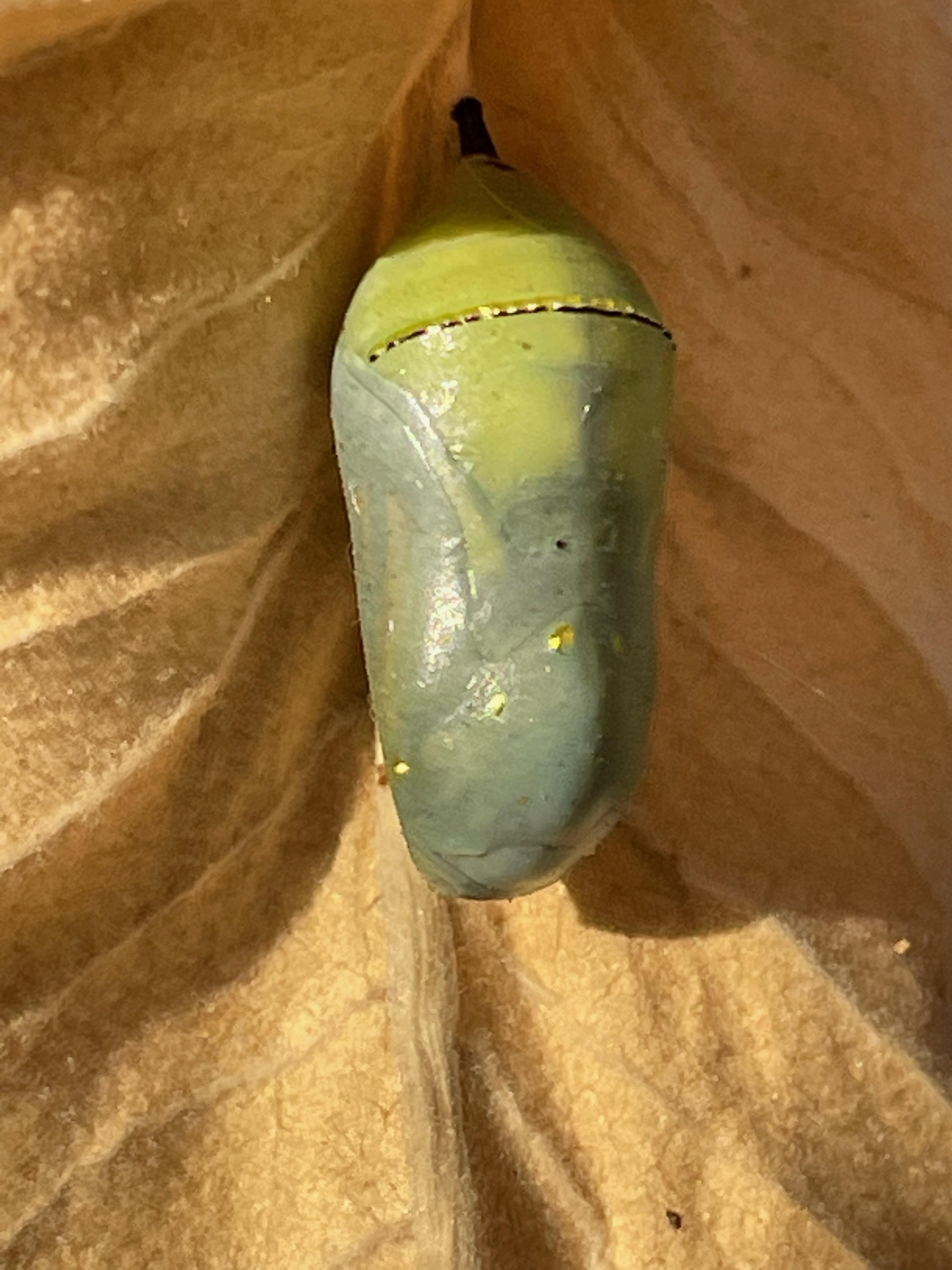
The next morning we arrived to band and anxiously rushed to the meadow to see whether the chrysalis had changed. It was October 15th, our very last day of songbird banding for the season. The 10 day weather outlook was starting to seem grim: temperatures in the 40s and rain were on the way.
It was now or never.
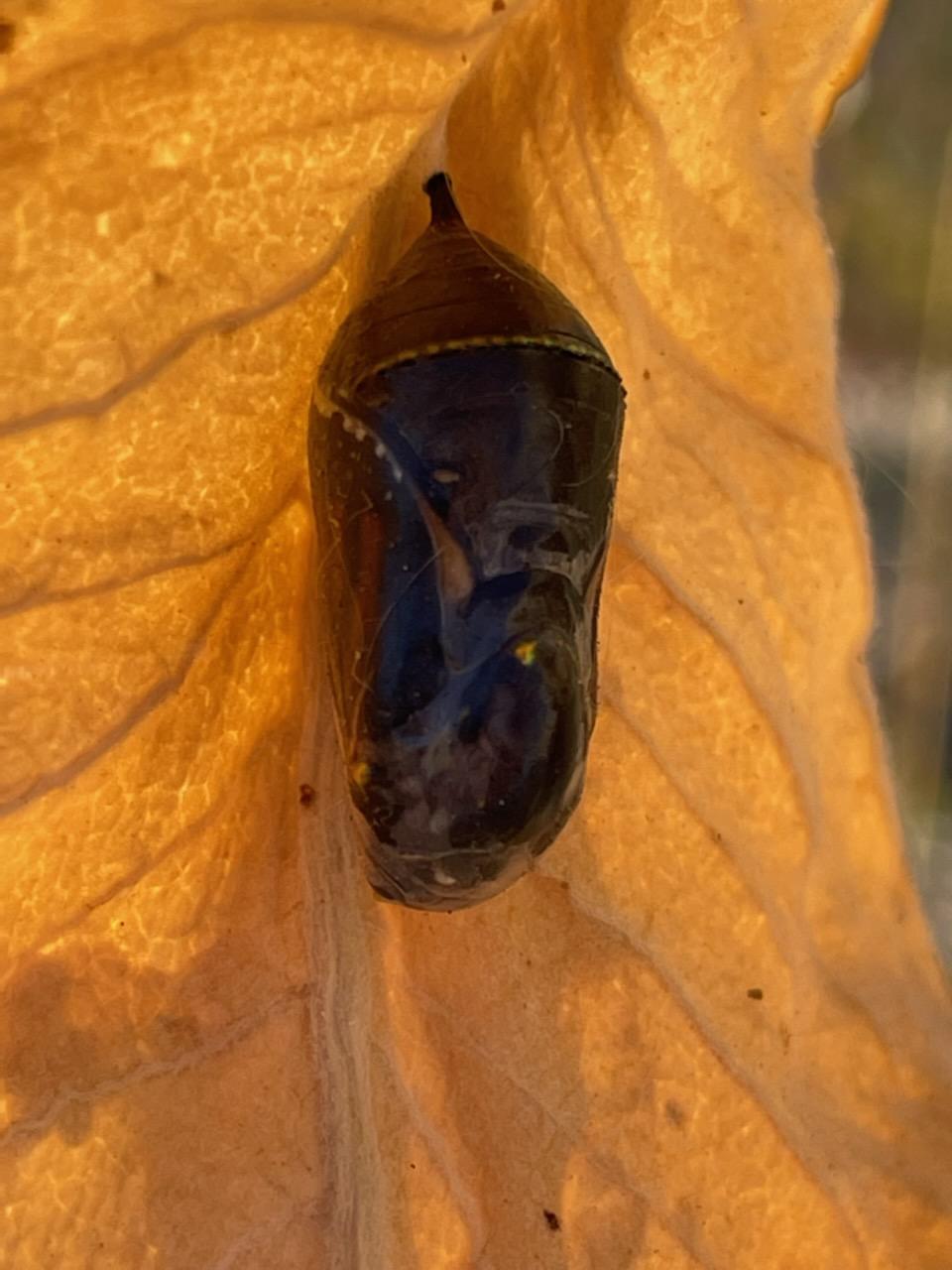
Peering under the dry milkweed leaf, we saw that the chrysalis had changed again. It was dark black! As the sun rose and light washed over the chrysalis we could see the stunning orange, black, and white markings of the folded monarch hindwing.
Everything in our google searches said today had to be the day!
Each net check we visited the chrysalis, carefully taking photos to see whether we could spot any minute changes in appearance. Nothing. We finished our banding day, packed up, and left. IBO bander and self-professed bug nerd, Gretel, said she would visit later that evening to check one last time.
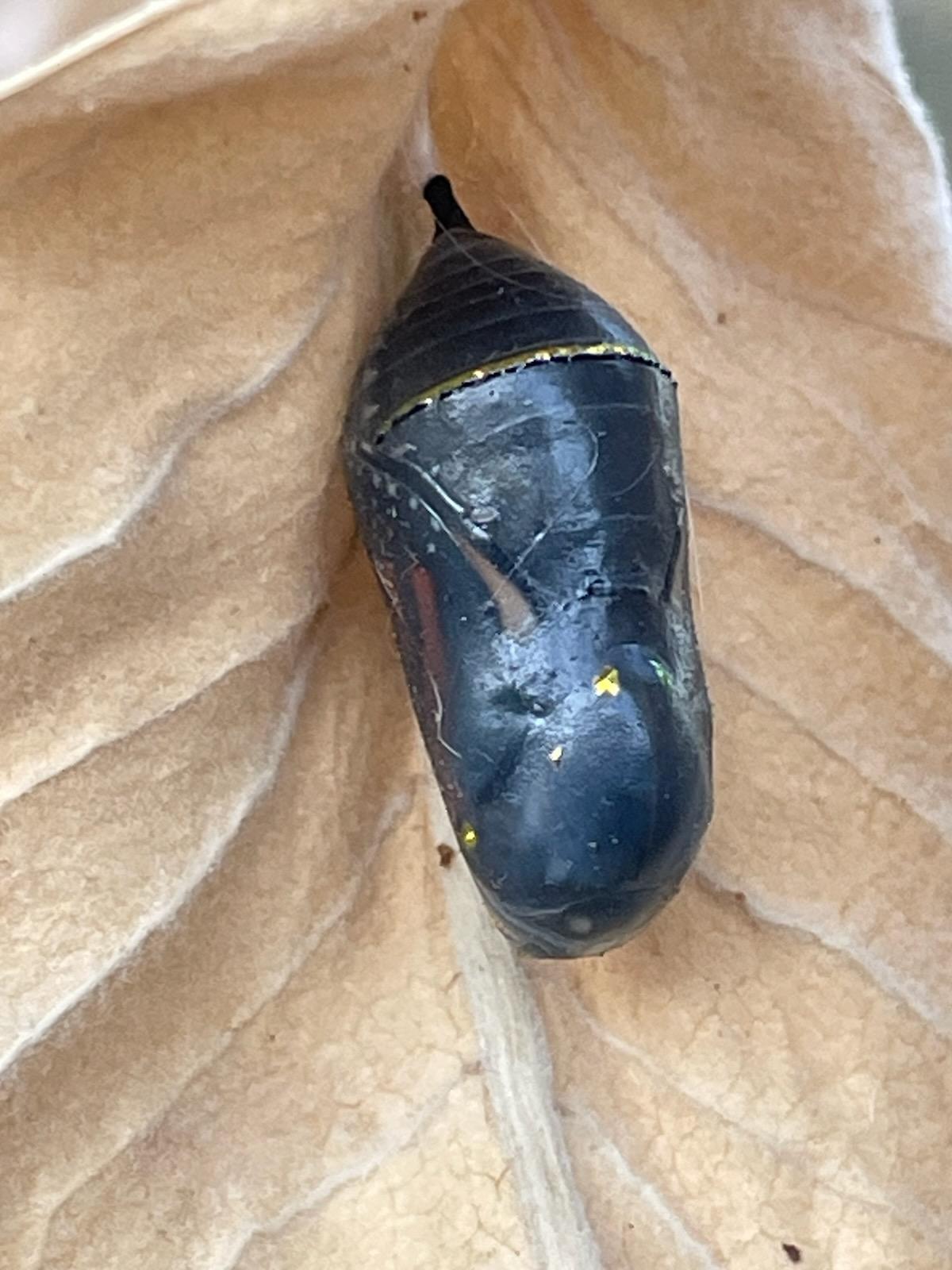
I went home and wondered. Then, around dinner time, the text came through…
…a photo of an empty chrysalis shell!!!
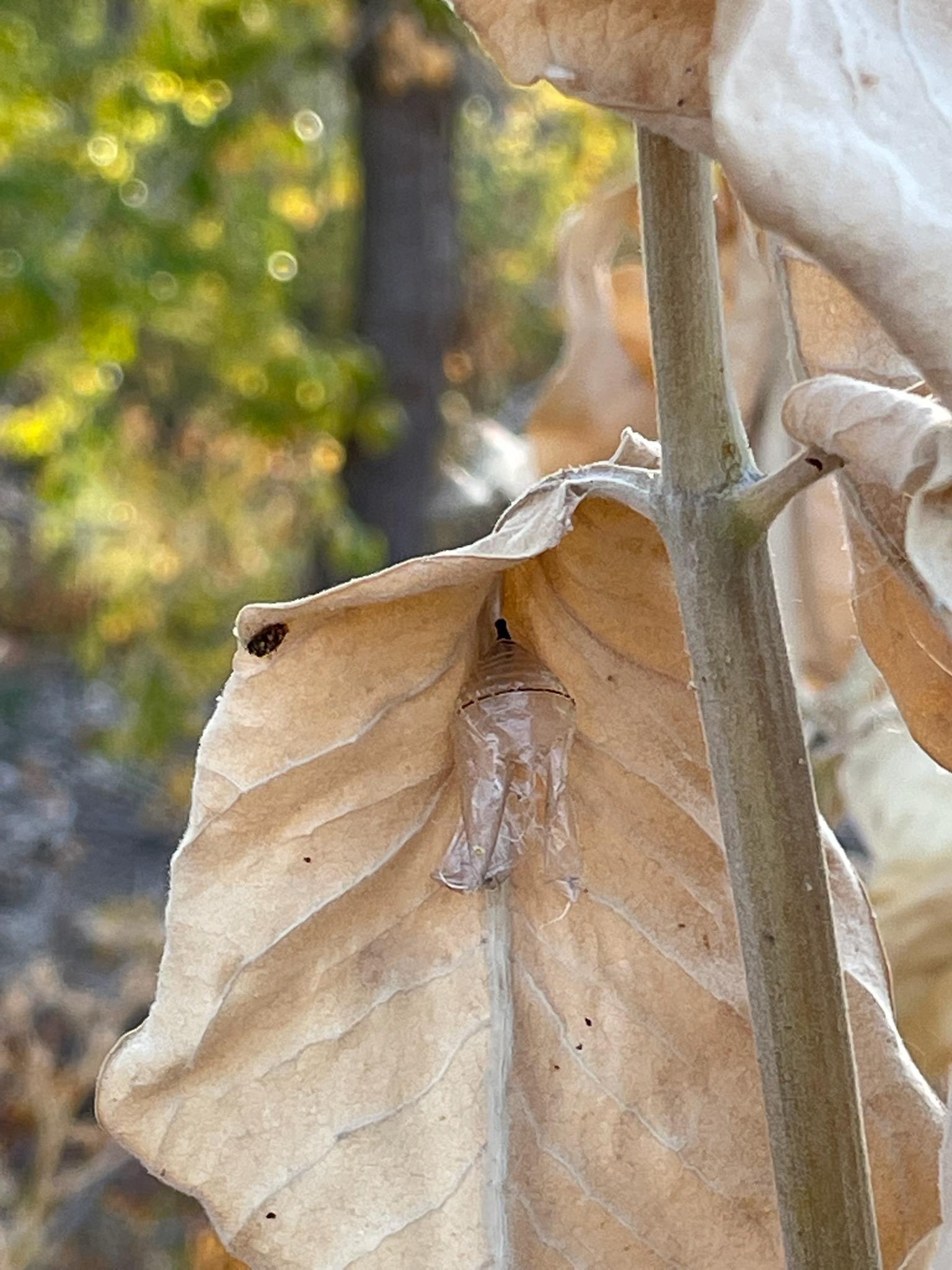
And then…wait for it…
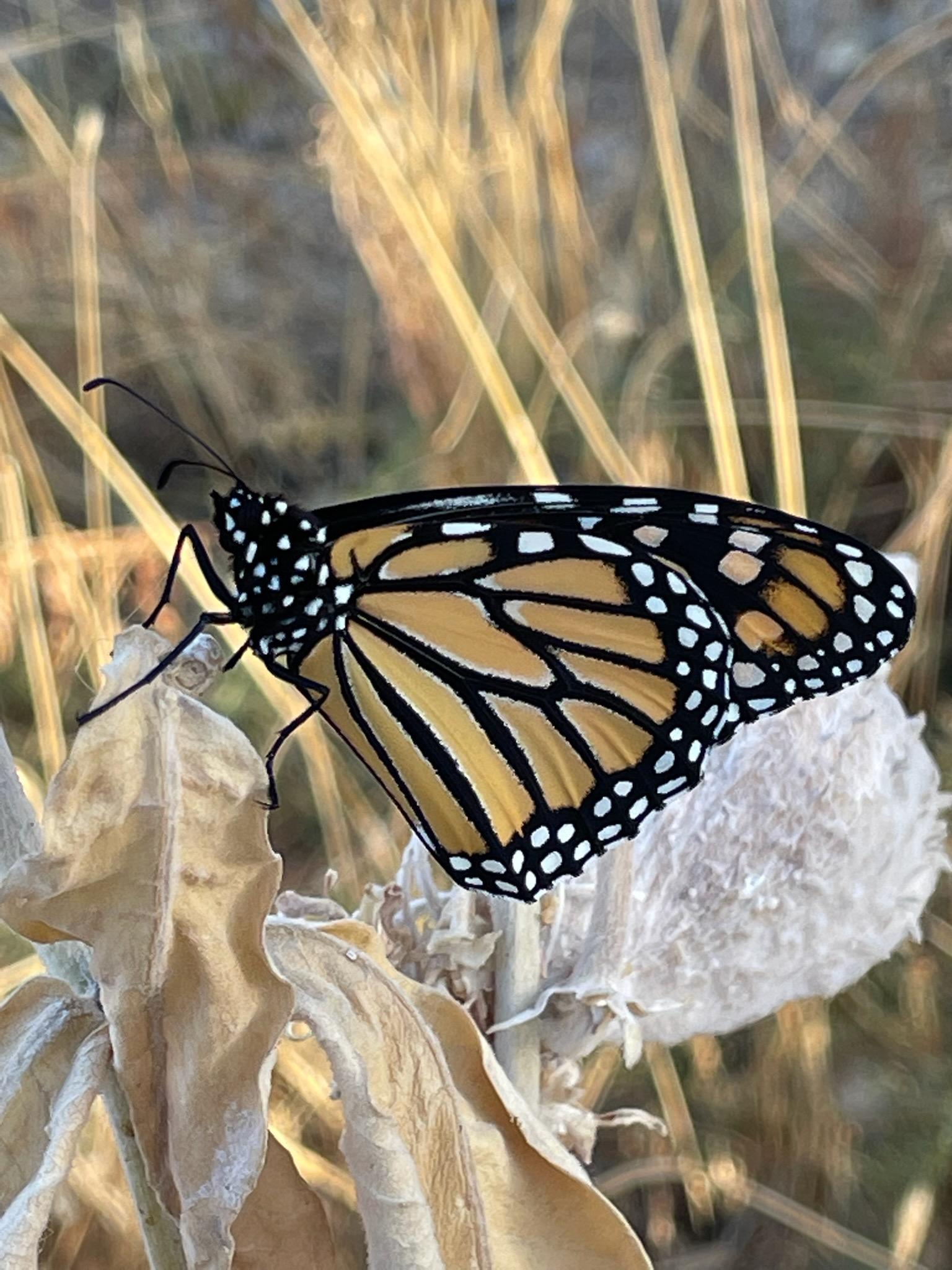
An emerged female Monarch! What a beautiful sight!
Gretel had the amazing opportunity to watch the monarch flap her wings, testing them in the same way we’ve watched many a raptor nestling flap their wings while holding the edge of the nest. As the sun set, the monarch seemed to settle in for the night.
She has an incredibly long and perilous journey ahead of her.
The following video shows a newly emerged monarch butterfly test her wings perched upon a dried out milkweed plant and contains no spoken audio.
She is the generation destined to fly south to Mexico or California for the winter. If she survives the journey, she’ll gather on pine trees with millions of her kin, waiting out the winter. Then in spring, her children and grandchildren will make the step-by-step migration back north. With any luck, her great-grandbutterflies will make it back to Idaho, lay a tiny egg on a milkweed plant, and start the cycle all over again.
Would you like to help with the work that makes this habitat restoration possible? You can donate today to support the Diane Moore Nature Center, sign up to volunteer on our next habitat restoration project, or join the Golden Eagle Audubon Society to help restore habitat through the Boise River ReWild project.
This article is part of our 2022 end of the year newsletter! View the full newsletter here, or click “older posts” below to read the next article.
Make sure you don’t miss out on IBO news! Sign up to get our email updates.
